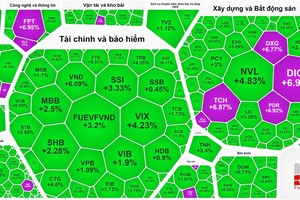
This morning, the university released the publication “Annual Vietnam economy report2019: Improve labor productivity in the digital economy” written by Professor Tran Tho Dat and Professor To Trung Thanh.
Digital economy refers to an economy that is based on digital computing technologies, although we increasingly perceive this as conducting business through markets based on the internet and the World Wide Web.
Each year during the period 2020 – 2030, the digital economy has contributed to 7 to 16.5 percent of Vietnam labor productivity growth,
The publication aims to assess Vietnam’s annual economic growth and perspective. The report result will be transferred to the National Assembly’s Economic Committee, the Central Economy unit, the office of the Central Party and other state competent agencies to disseminate the school’s opinions to the country’s matters.
At the launch event, Professor Tran Tho Dat said that the publication, the first of its kind in the country, aims to value how digital economy impact on labor productivity of all sectors as well as introduce prediction of digital economy on total labor productivity by 2030.
The report focused on labor productivity in official section and non-official section and individual. In addition, the publication also researched on impact of Covid-19 on the country’s economy proposing policies to cope with the pandemic.
The report also mentioned Vietnam’s labor productivity has improved but is still low in comparison with other ASEAN members and in the world. Therefore, digital economy’s fast development is expected to bring opportunities for the Southeast Asian country to improve its labor productivity and then gain sustainable growth and cope with outside shocks.
The publication also introduced four hypothetical scenarios and labor productivity forecast by 2030 in the digital economy.
























